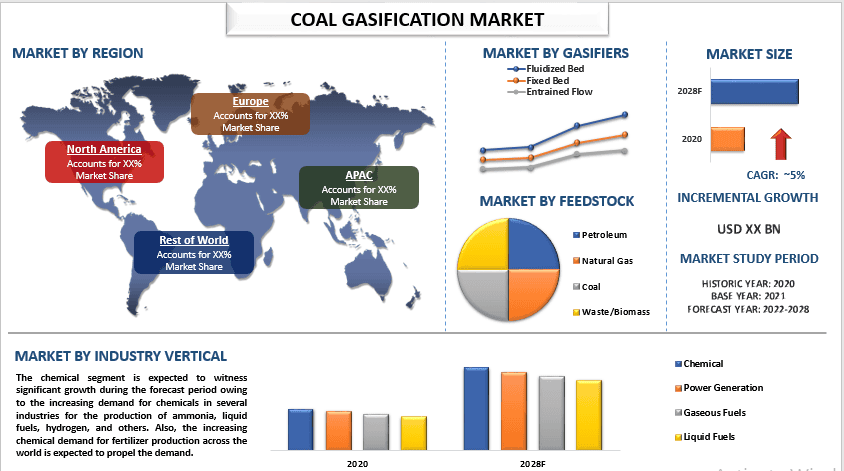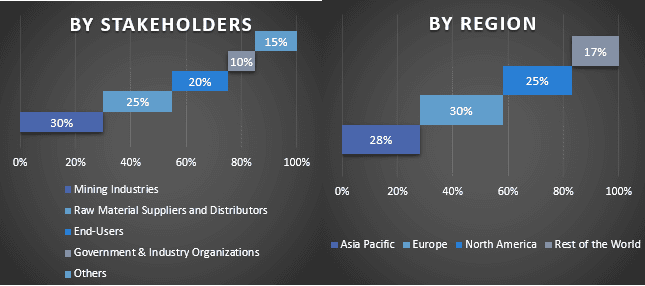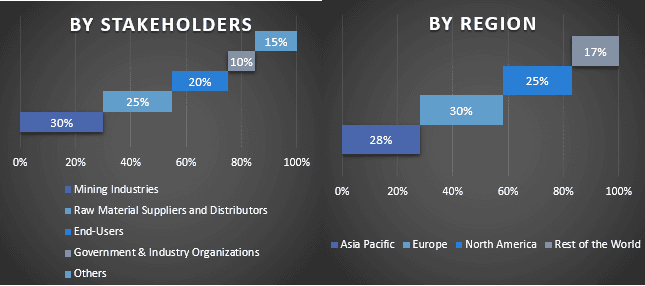Emphasis on Gasifier (Fluidized Bed, Fixed Bed, and Entrained Flow); Feedstock (Petroleum, Natural Gas, Coal, and Waste/Biomass); Industry Vertical (Chemical, Power Generation, Gaseous Fuel, and Liquid Fuel); and Region/Country

Global Coal Gasification Market is expected to grow at a significant rate of around 5% during the forecast period. Coal gasification is the process in which coal is partially oxidized with oxygen, air, carbon dioxide, and/or steam to form fuel gas. Additionally, coal gasification is a series of molecular chemical events that result in syngas that predominantly consists of a mixture of carbon dioxide, hydrogen, carbon monoxide, methane, and water vapor. This syngas is produced by complex hydrocarbons and lower energy sources. Recent years have seen a considerable increase in the demand for coal gasification as a result of the rising demand for syngas in the production of fuels, fertilizers, and synthetic and solvent materials. Additionally, it is expected that the need for coking coal in the steel industry will rise as a result of the manufacture of steel and the use of syngas as a feedstock for chemicals.
General Electric Company, Mitsubishi Heavy Industries Ltd., Shell Plc., Oil and Natural Gas Corporation Limited, SEDIN Engineering Co. Ltd., KBR Inc., Air Products and Chemicals, Inc., ANDRITZ, Air Liquide, and Synthesis Energy Systems, Inc. are some of the key players in the market. Several M&As along with partnerships have been undertaken by these players to facilitate customers with hi-tech and innovative products/technologies.
Insights Presented in the Report
“Amongst gasifiers, fluidized bed category to witness significant market growth during the forecast period”
Based on the gasifier, the market is segmented into the fluidized bed, fixed bed, and entrained flow. The fluidized bed segment is expected to register significant market growth during the forecast period owing to the higher efficiency during the heat exchange. The fluidized bed segment’s improved temperature control is also a result of the turbulent gas flow and quick circulation. The fluidized bed gasifier also has other considerable advantages, such as a high heat transfer rate and load flexibility, fuel flexibility, and a low requirement for oxidants and steam and is expected to support the market’s potential development.
“Amongst feedstock, the coal segment to hold a significant CAGR in the market in 2020”
Based on the feedstock, the market is bifurcated into petroleum, natural gas, coal, and waste/biomass. The coal segment is expected to witness significant CAGR during the forecast period due to the lower price and innovative technological advancements such as the thermochemical process which convert the coal into valuable gases without the need for mining. Furthermore, underground coal mining, which can collect materials from deep depths below the earth, is expected to promote growth over the course of the forecast period.
“Asia-Pacific to hold a significant share in the market”
In 2020, Asia-Pacific held a significant share of the global coal gasification market. This is mainly due to the increasing demand for energy and the increasing adoption of coal gasification for energy generation in the region. Also, the presence of large coal reserves across the region is expected to propel growth during the forecast period. For instance, according to the GSI Coal Inventory 2020, India has approximately 340,000 million tons of coal resources including proved, indicated, and inferred. Additionally, the government support for coal mining and allowance of the FDI will support the exploration and production activities of the coal and subsequently provides lucrative opportunities for coal gasification. Furthermore, technological advancements such as the development of coal to hydrogen production technology and increasing research & development activities in the continent will support the expansion of the existing and new markets.
Reasons to buy this report:
Customization Options:
The global coal gasification market can further be customized as per the requirement or any other market segment. Besides this, UMI understands that you may have your own business needs, hence feel free to connect with us to get a report that completely suits your requirements.
1. Market Introduction
2. Research Methodology Or Assumption
3. Market Synopsis
4. Executive Summary
5. Impact Of Covid-19 On The Coal Gasification Market
6. Coal Gasification Market Revenue (usd Bn), 2020-2028f
7. Market Insights By Gasifier
8. Market Insights By Feedstock
9. Market Insights By Industry Vertical
10. Market Insights By Region
11. Coal Gasification Market Dynamics
12. Coal Gasification Market Opportunities
13. Coal Gasification Market Trends
14. Demand And Supply-side Analysis
15. Value Chain Analysis
16. Pricing Analysis
17. Strategic Insights
18. Competitive Scenario
19. Company Profiled
20. Disclaimer
Research Methodology for the Coal Gasification Market Analysis (2022-2028)
Analyzing the historical market, estimating the current market, and forecasting the future market of the global coal gasification market were the three major steps undertaken to create and analyze the adoption of coal gasification in major regions globally. Exhaustive secondary research was conducted to collect the historical market numbers and estimate the current market size. Secondly, to validate these insights, numerous findings and assumptions were taken into consideration. Moreover, exhaustive primary interviews were also conducted, with industry experts across the value chain of the global coal gasification market. Post assumption and validation of market numbers through primary interviews, we employed a top-down/bottom-up approach to forecasting the complete market size. Thereafter, market breakdown and data triangulation methods were adopted to estimate and analyze the market size of segments and sub-segments of the industry pertains to. Detailed methodology is explained below:
Analysis of Historical Market Size
Step 1: In-Depth Study of Secondary Sources:
Detail secondary study was conducted to obtain the historical market size of the coal gasification market through company internal sources such as annual reports & financial statements, performance presentations, press releases, etc., and external sources including journals, news & articles, government publications, competitor publications, sector reports, third-party database, and other credible publications.
Step 2: Market Segmentation:
After obtaining the historical market size of the coal gasification market, we conducted a detailed secondary analysis to gather historical market insights and share for different segments & sub-segments for major regions. Major segments are included in the report as gasifiers, feedstock, and industry verticals. Further country-level analyses were conducted to evaluate the overall adoption of testing models in that region.
Step 3: Factor Analysis:
After acquiring the historical market size of different segments and sub-segments, we conducted a detailed factor analysis to estimate the current market size of the coal gasification market. Further, we conducted factor analysis using dependent and independent variables such as gasifiers, feedstock, and industry vertical of coal gasification. A thorough analysis was conducted for demand and supply-side scenarios considering top partnerships, mergers and acquisitions, business expansion, and product launches in the coal gasification market sector across the globe.
Current Market Size Estimate & Forecast
Current Market Sizing: Based on actionable insights from the above 3 steps, we arrived at the current market size, key players in the global coal gasification market, and market shares of the segments. All the required percentage shares split, and market breakdowns were determined using the above-mentioned secondary approach and were verified through primary interviews.
Estimation & Forecasting: For market estimation and forecast, weights were assigned to different factors including drivers & trends, restraints, and opportunities available for the stakeholders. After analyzing these factors, relevant forecasting techniques i.e., the top-down/bottom-up approach were applied to arrive at the market forecast for 2028 for different segments and sub-segments across the major markets globally. The research methodology adopted to estimate the market size encompasses:
Market Size and Share Validation
Primary Research: In-depth interviews were conducted with the Key Opinion Leaders (KOLs) including Top Level Executives (CXO/VPs, Sales Head, Marketing Head, Operational Head, Regional Head, Country Head, etc.) across major regions. Primary research findings were then summarized, and statistical analysis was performed to prove the stated hypothesis. Inputs from primary research were consolidated with secondary findings, hence turning information into actionable insights.
Split of Primary Participants in Different Regions

Market Engineering
The data triangulation technique was employed to complete the overall market estimation and to arrive at precise statistical numbers for each segment and sub-segment of the global coal gasification market. Data was split into several segments & sub-segments post studying various parameters and trends in the areas of gasifiers, feedstock, and industry verticals in the global coal gasification market.
The main objective of the Global Coal Gasification Market Study
The current & future market trends of the global coal gasification market were pinpointed in the study. Investors can gain strategic insights to base their discretion for investments on the qualitative and quantitative analysis performed in the study. Current and future market trends determined the overall attractiveness of the market at a regional level, providing a platform for the industrial participant to exploit the untapped market to benefit from a first-mover advantage. Other quantitative goals of the studies include:

Customers who bought this item also bought